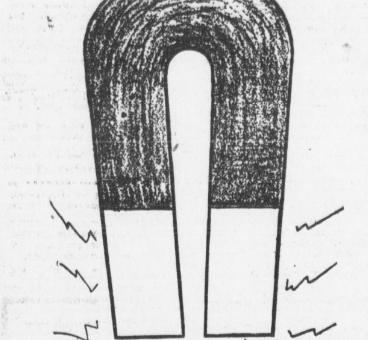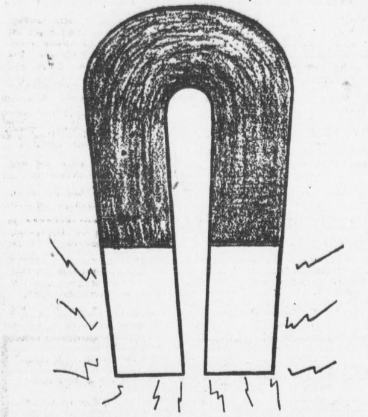
The article below gives a basic description of Nikola Tesla’s magnetic motor and its most basic applications. Originally published in 1895.
Tesla’s Magic Motor
A Reporter Visits the Inventor’s Workshop
While the Westinghouse Electric Company and the Baldwin Locomotive Works are combining the resources of their tremendous plants and are exerting all the energy that lies in millions upon millions of dollars to develop the possibilities of the Tesla motor, which some day will draw cars at a speed of 150 miles an hour, the inventor, Nikola Tesla, plods along in his workshop, planning and scheming and experimenting and maintaining a profound silence.
This workshop – a long bare room at 46 East Houston Street – is fitted up with only a few electrical appliances. There Mr. Tesla is found every day, sitting at his desk, tinkering with figures and drawings. A “Recorder” reporter called upon his yesterday to learn something about this fabulous motor, which is going to send heavy trains rushing through space at such a terrific speed. As far as gaining any information from Mr. Tesla was concerned, the visit was fruitless.

Gently, yet very firmly – the manner was born of long experience – Mr. Tesla declined to be interviewed. The reporter, however, was allowed to see the marvelous motor, and later in the day, through the kindness of a gentleman who had devoted much time to studying the principle on which it is constructed, was told exactly how the motor works. Truly, it is a marvelous invention. The secret lies in turning the inert and seemingly lifeless force of magnetism into an active force more powerful than steam or a current from a dynamo.
If you take an ordinary magnet or a piece of iron, through which a magnetic current is passing, and hold it close to little pieces of iron or steel, it will attract them and hold them motionless. This is practically all that the world has ever known of magnetic force. Now, it seemed to Nikola Tesla – this was years ago, when he was a student in the Polytechnique – that this invisible force, pent up within the confines of the magnet, might perhaps be developed, or transmitted or changed or utilized in such a manner that it would become active and quick where it had always lain passive. Upon this theory he worked for years, and its triumphant development led to the Tesla motor. The principle of the Tesla motor is this:
An electric current is passed through a circular magnet, in appearance resembling a life preserver. It consists simply of a ring of iron with copper wire bound around it. The electric current generates a strong magnetic current, which flashes around and around the circular magnet at terrific speed. Now, if one holds a nail close to an ordinary electric magnet it will be passive in the hand until it is brought close enough for the magnetic force to seize it, then it will fly out of the hand straight to the magnet. But – and here lies the wonder of it all – if one holds a nail close to this circular magnet of Tesla’s it will begin to revolve in the hand. That is, if the nail is held by the head and the point allowed to hang over the hollow center of the magnet, the point will move around in a circle, slowly at first, then faster and faster, until, if it is dropped upon the table in the center of the hollow, it will spin around so rapidly that the eye cannot follow its motions.
One hears the explanation of the phenomenon – there are several magnetic currents in the iron ring and they are chasing one another around in a furious race – and is as much mystified as ever. If one balances an iron wheel upon the nail or lets the wheel revolve upon a finger, using the finger as the axle, and holds it close to the magnet, it will fly around at a speed that will take one’s breath away. It is not necessary to touch the magnet at all. All one needs do is to hold a piece of iron or steel in his hand and bring it within a foot of the magnet, and then he will feel a queer sensation as of some invisible force trying to draw the piece of metal out of his hand, and, failing in this, striving to twist it around in a circle. If one places a wide board over the whole magnet the force will make itself felt through the wood, for if a piece of iron shaped like an egg is dropped upon the board it will wobble around for a moment and then, as soon as it gains a little momentum it will spin around on its narrower end like a top.
Such is the principle of the Tesla motor. In its application as a motive power on a railroad, the construction, of course, differs from that of the experimental magnet, but the idea is the same.
Here the circular magnet is attached to the bottom of the engine and the axle upon which the wheels revolve passes through the center of the magnet without touching it. When the current is turned on the magnetic force whirling around the hollow of the magnet catches the axle and turns it. The power for generating this magnetic current can be transmitted by under ground wires for almost any distance, and there is practically no waste of power or energy.
The Westinghouse company controls the American patent of this motor. Its application to railroads is merely one of its uses. Dozens of skilled mechanics are at work constructing machines which embody Mr. Tesla’s idea in various forms and for various purposes, and electricians believe that before long it will have revolutionized electrical science.
As far as its ability to propel cars at a speed of 150 miles or more an hour is concerned, no expert whom the reporter saw has the slightest doubt of it. One electrician said: “As far as speed is concerned, Mr. Tesla’s invention contributes all that electricity can do as a motive power. There is not the faintest doubt in the world that the Tesla motor will propel a car at the rate of 150, 200 – I hardly hesitate to say 300 miles an hour. Now, however, they must build engines and cars and roadbeds and tracks to stand the strain, and when they have done that, rapid transit will be attained.”
Source: The Portland daily press. (Portland, Me.), 17 Aug. 1895.

